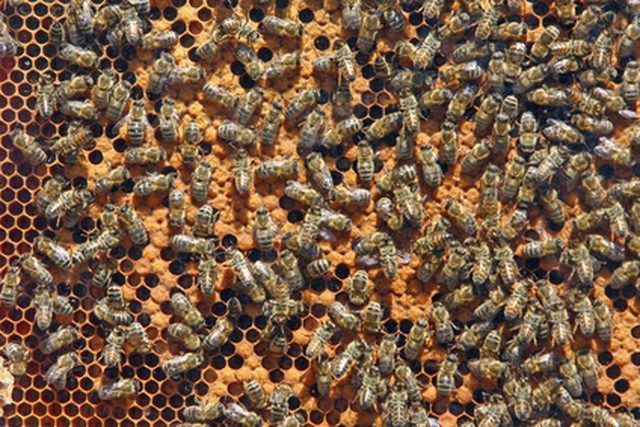Bulbs
Flower Basics
Flower Beds & Specialty Gardens
Flower Garden
Garden Furniture
Garden Gnomes
Garden Seeds
Garden Sheds
Garden Statues
Garden Tools & Supplies
Gardening Basics
Green & Organic
Groundcovers & Vines
Growing Annuals
Growing Basil
Growing Beans
Growing Berries
Growing Blueberries
Growing Cactus
Growing Corn
Growing Cotton
Growing Edibles
Growing Flowers
Growing Garlic
Growing Grapes
Growing Grass
Growing Herbs
Growing Jasmine
Growing Mint
Growing Mushrooms
Orchids
Growing Peanuts
Growing Perennials
Growing Plants
Growing Rosemary
Growing Roses
Growing Strawberries
Growing Sunflowers
Growing Thyme
Growing Tomatoes
Growing Tulips
Growing Vegetables
Herb Basics
Herb Garden
Indoor Growing
Landscaping Basics
Landscaping Patios
Landscaping Plants
Landscaping Shrubs
Landscaping Trees
Landscaping Walks & Pathways
Lawn Basics
Lawn Maintenance
Lawn Mowers
Lawn Ornaments
Lawn Planting
Lawn Tools
Outdoor Growing
Overall Landscape Planning
Pests, Weeds & Problems
Plant Basics
Rock Garden
Rose Garden
Shrubs
Soil
Specialty Gardens
Trees
Vegetable Garden
Yard Maintenance
How Do Bees Make Their Beehives?
How Do Bees Make Their Beehives?. The way that bees make their beehives is an extraordinary achievement for such tiny insects. Different types of honey bees make their beehives by using a system in which every individual bee has a task to do for the beehive to properly function. All honey bee hives contain a queen, workers and drones.

The way that bees make their beehives is an extraordinary achievement for such tiny insects. Different types of honey bees make their beehives by using a system in which every individual bee has a task to do for the beehive to properly function. All honey bee hives contain a queen, workers and drones.
Location
Scout or worker bees locate a general area for the hive. Bees usually want to keep their hive in a dark place to keep warm for the winter months. After bees have found a suitable location, worker bees use wax that they have stored in their stomachs to begin to construct walls for storing beeswax and honey. Bees create hives by chewing wax until it becomes soft, then they bond these large quantities of wax onto the cells of a honeycomb. Once the first walls are up, the queen bee lays its eggs into the wall, effectively starting the beehive.
Role of the Queen
Queen bees are chosen by the worker bees, and are chosen by mostly by size. Once queen bees reach adulthood, they go on many mating flights and will usually mate with 10 or more male bees. After the mating flights, the queen bees stores millions of sperm in her body that will be good for the rest of her lifespan. The main job of the queen bee within the hive is to lay eggs and ensure the survival of the hive. Once the queen starts to slow down in producing eggs or starts to show her diminishing power, worker bees raise more queen larva; after a new queen emerges, the old queen bee leaves the hive with a swarm of offspring. The former queen must either find a new hive or die, and the new queen bee will use worker bees to spread her pheromones throughout the hive to let the other bees know that she is alive.
Bee Duties
Worker bees and drones are the two main types of bees within the hive. Worker bees make up most of the hive, around 85 percent, and are always female. Worker bees have three main life stages: young, middle age, and older. Young worker bees are 1 to 12 days old and clean cells, nurse the brood and assist the queen. Middle-age worker bees are 12 to 20 days old and build the comb, store pollen and ventilate the nest. Older worker bees are 20 to 30 days old. They forage for nectar and provide the needed enzymes that are required to produce nectar into honey.
Drones are always male, and their main purpose within the hive is to mate with the queen. The drones that are chosen by the queen to mate have their reproductive parts ripped out during mating and subsequently die. Some drones will also guard the opening of the hive for protection from predators and other invaders.
The Langstroth Hives
The most common commercial beehive used by beekeepers is the Langstroth hive. Invented in 1851 by Lorenzo Langstroth, the Langstroth hive is a top-opened hive with movable, enclosed frames that have a top bar that supports the comb. The design revolutionized beekeeping because the movable frames allow for the beekeeper to easily check for diseases and parasites. The Langstroth design also makes it easy for the beekeeper to split the hive for making new colonies.
Duration of Hive
Most hives and bee colonies have around 20,000 to 30,000 bees. Hives typically will last as long as the colony survives. Most worker and drone bees survive for about 30 days, while the queen can live up to 3 years. The survival of the hive is determined by the hive's defenses from predators and Mother Nature. If the colony of bees has to abandon a hive because of predators or other causes, the colony will immediately begin searching for a new location.